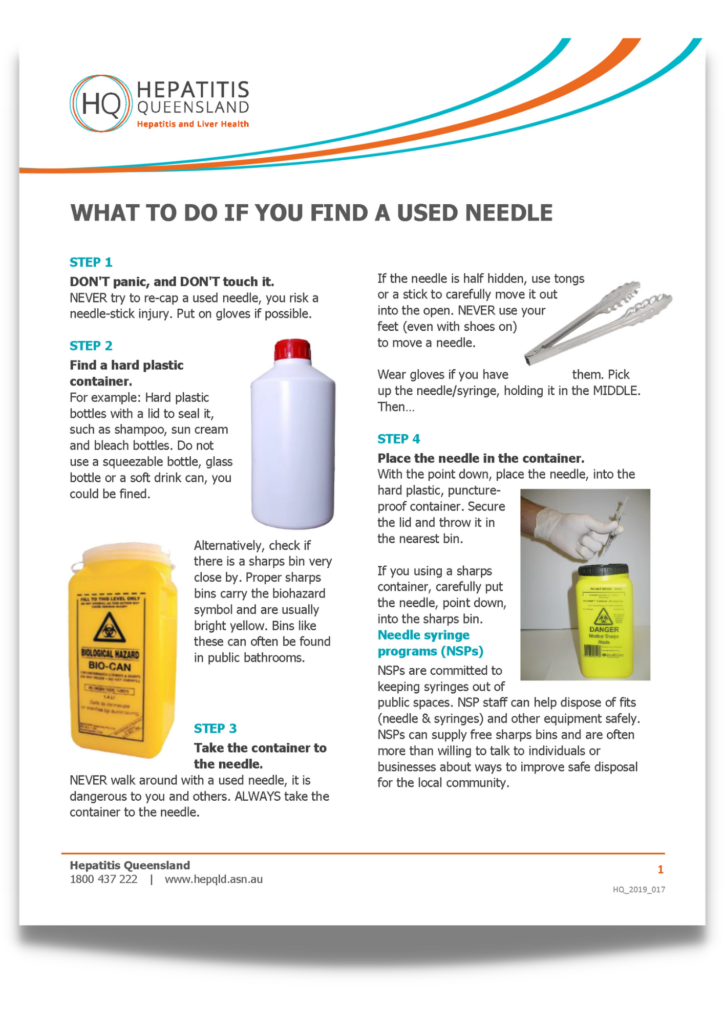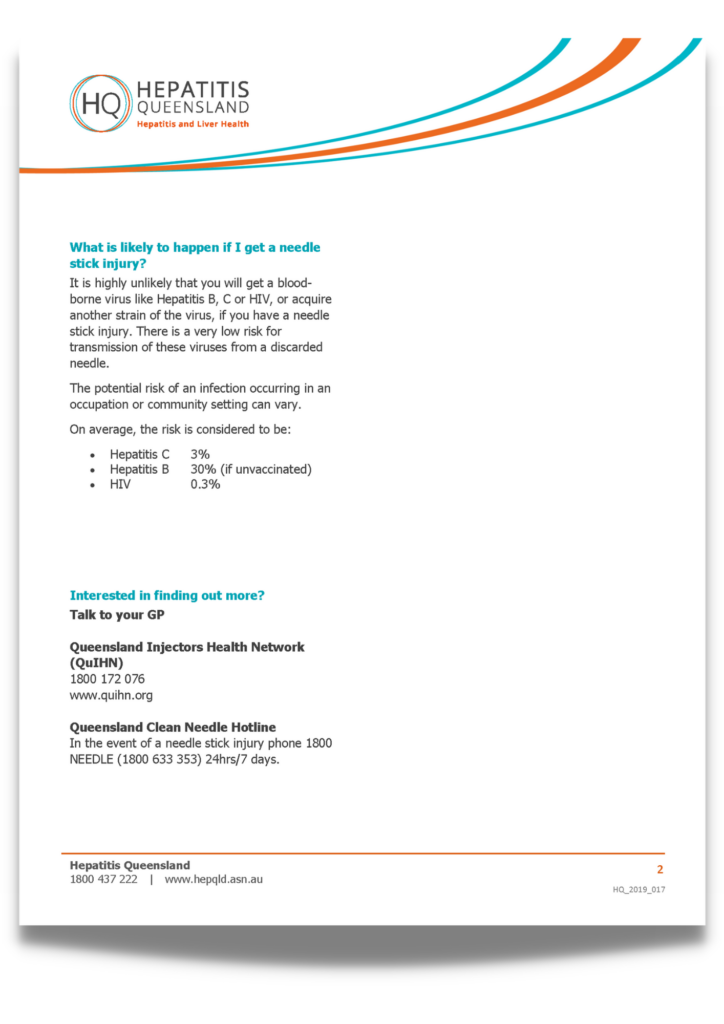What to do with a used syringe
What to do with a used syringe
Step 1 – Don’t panic and don’t touch the used syringe
Never try to re-cap a used needle, you risk a needle-stick injury. Put on gloves if possible.
Step 2 – Find a hard plastic container
For example: Hard plastic bottles with a lid to seal it, such as shampoo, sun cream and bleach bottles. Do not use a squeezable bottle, glass bottle or a soft drink can, you could be fined.
Alternatively, check if there is a sharps bin very close by. Proper sharps bins carry the biohazard symbol and are usually bright yellow. Bins like these can often be found in public bathrooms.
Step 3 – Take the container to the needle
Never walk around with a used needle, it is dangerous to you and others. Always take the container to the needle.
If the needle is half hidden, use tongs or a stick to carefully move it out into the open. NEVER use your feet (even with shoes on) to move a needle.
Wear gloves if you have them. Pick up the needle/syringe, holding it in the middle.
Step 4 – Place the needle in the container
With the point down, place the needle, into the hard plastic, puncture-proof container. Secure the lid and throw it in the nearest bin.
If you using a sharps container, carefully put the needle, point down, into the sharps bin.
Needle and syringe programs
Needle and syringe programs, otherwise known as NSPs, are committed to keeping syringes out of public spaces. NSP staff can help dispose of fits (needle and syringes) and other equipment safely.
NSPs can supply free sharps bins and are often more than willing to talk to individuals or businesses about ways to improve safe disposal for the local community.
What will happen if I get a needle stick injury?
It is highly unlikely that you will get a blood-borne virus like hepatitis B, hepatitis C or HIV, or acquire another strain of the virus, if you have a needle stick injury. There is a very low risk for transmission of these viruses from a discarded needle.
The potential risk of an infection occurring in an occupation or community setting can vary. On average, the risk is considered to be:
- Hepatitis C – 3%
- Hepatitis B – 30% (if unvaccinated)
- HIV – 0.3%
Talk to your doctor for more information.
Useful Contacts
Queensland Injectors Health Network (QuIHN)
1800 172 076
www.quihn.org
Queensland Clean Needle Hotline
In the event of a needle stick injury phone 1800 NEEDLE (1800 633 353) 24hrs/7 days.


